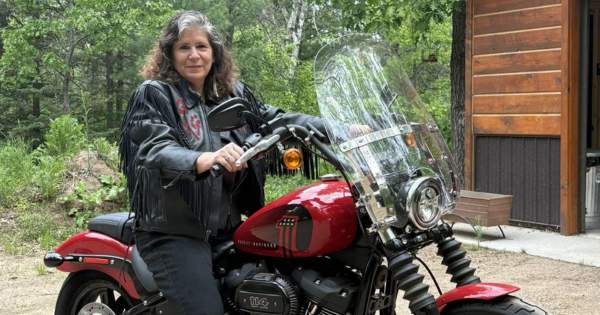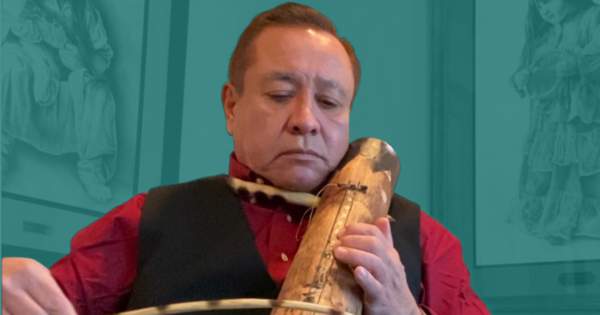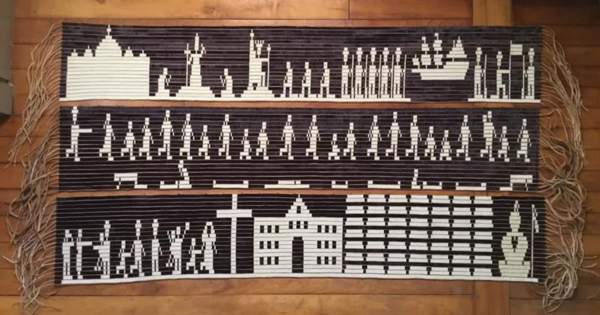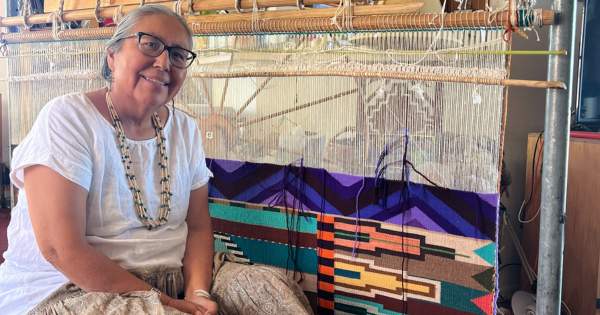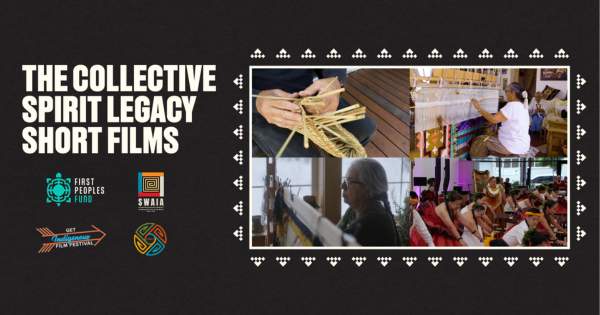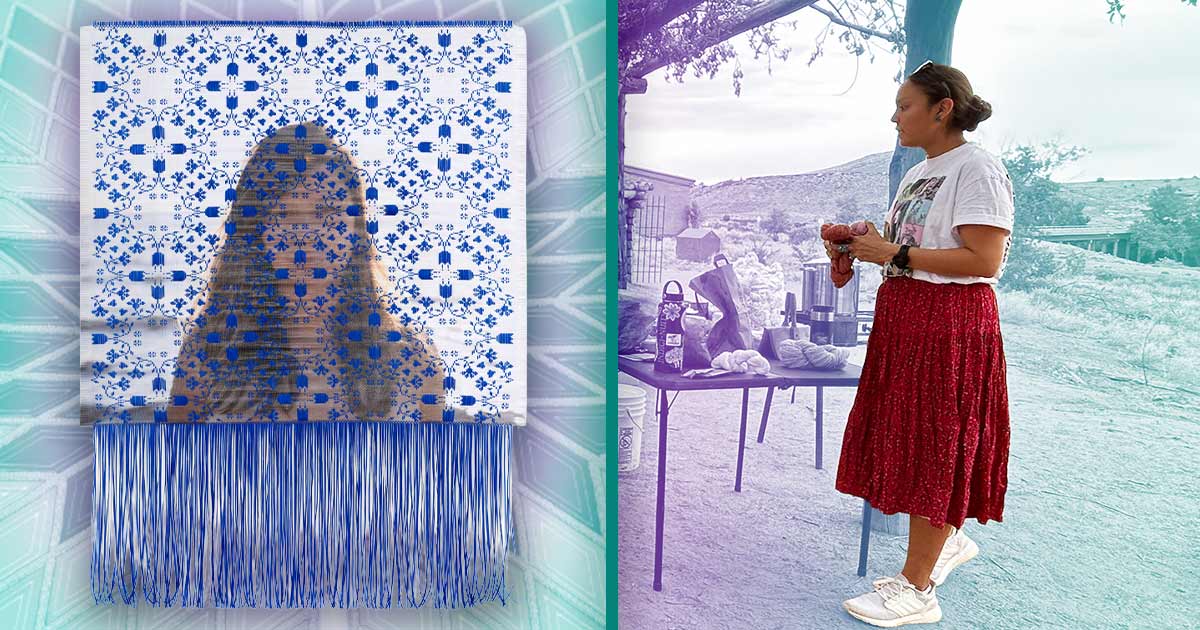
Diverse Voices, Dynamic Art
In a tribute to the diversity and artistic brilliance within Indigenous communities, we proudly present this month's latest highlight of Cultural Capital (CC) and Artist in Business Leadership (ABL) fellows.
The following creatives represent how Indigenous artistry flourishes through each fellow participating in our fellowships. With practices spanning generations, these fellows epitomize the essence of keeping their cultures alive while excelling in their freedom of expression.
Cultural Capital
From the Lac Courte Oreilles Ojibwe, Fort Peck Assiniboine, and Dakota Nations, Anangookwe Wolf is a CC Fellow with many artistic practices. Their personal narratives are woven with cultural perspectives through writing, spoken word, music, and textile art.
“I'm using this fellowship to bring more opportunities to my reservation. If there's any opportunity to lift up fellow youths back home, I will do it. And I think that really aligns with First Peoples Fund. You're returning to your community; it's sharing a love for your culture, the artwork, and whatever subject you choose.” Anangookwe says.
“I'm using this fellowship to bring more opportunities to my reservation. If there's any opportunity to lift up fellow youths back home, I will do it. And I think that really aligns with First Peoples Fund. You're returning to your community; it's sharing a love for your culture, the artwork, and whatever subject you choose.” Anangookwe says.
Since completing high school, Anangookwe has sought a means to reconnect with their reservation and community, finding solace in poetry, particularly slam poetry.
“Much of my poetry is now tied to a complex love for my reservation. I lived on the reservation when I was four or five years old. It's a beautiful place,” Wolf said.
“Much of my poetry is now tied to a complex love for my reservation. I lived on the reservation when I was four or five years old. It's a beautiful place,” Wolf said.
Anangookwe doesn’t just want to paint a simplistic picture. They acknowledge both the beauty and struggles of their surroundings, which are shaped by intergenerational trauma and the complexities of family dynamics. Through their poetry, they aim to show the multifaceted nature of reservation life with empathy and understanding.
Another CC fellow, Mariah Claw (Diné or Navajo) brings the multigenerational art of weaving and textiles into her fellowship.
“Weaving has been a practice in Diné culture for much longer than we can even imagine. Weaving is an art form and an oral tradition, wherein a loom represents the world,” Claw said.
“Weaving has been a practice in Diné culture for much longer than we can even imagine. Weaving is an art form and an oral tradition, wherein a loom represents the world,” Claw said.
She reflects on a cherished story passed down by her nálí, paternal grandmother, who recounted her childhood memories of sitting beside her own grandmother at the loom. The loom serves as a gateway not only to the present but also to the past and future, symbolizing the interconnectedness of generations and their stories.
“I am new to many of these practices and techniques and always learn something new. But one of the things that I have always wanted to do is work with youth in my community, specifically at home,” she said.
“I am new to many of these practices and techniques and always learn something new. But one of the things that I have always wanted to do is work with youth in my community, specifically at home,” she said.
Inspired by her grandmother's narrative, Mariah finds purpose in preserving and passing on the traditions of Diné weaving. She recognizes the loom as a teacher and a vessel for cultural heritage. While acknowledging her own journey as a weaver and learner, Mariah emphasizes the importance of providing opportunities for youth to engage with cultural arts.
Artist in Business Leadership
Dan Friday, an ABL Fellow from the Lummi Nation, is rooted in a family tradition of artistry. Despite his early passion for art, practicality led him down a different path of working as a mechanic to meet life's necessities. However, at age 20, he discovered the world of glass artistry, which became a livelihood and a means to express himself creatively.
“It [glass making] has its own magnetism just in making it, even if that's when I was ready to make gift store items for the rest of my life. But once I got involved and went to the Pilchuck Glass School and met a lot of successful glass artists, that was really eye-opening for me,” Dan said.
“It [glass making] has its own magnetism just in making it, even if that's when I was ready to make gift store items for the rest of my life. But once I got involved and went to the Pilchuck Glass School and met a lot of successful glass artists, that was really eye-opening for me,” Dan said.
Dan has initiated a program in collaboration with the Pilchuck Glass School, focusing on outreach to Native youth, providing them with opportunities to learn and explore the art of glassmaking. Dan aims to inspire and empower others to discover the transformative potential of glass artistry.
“That's all we have as kids. It's a battle to get them away from the screens. It's easy to lose kids to the trappings of the modern world. Art isn't saving the world, but you can find a way to save yourself by doing it. And I know it's been good for me,” he said.
“That's all we have as kids. It's a battle to get them away from the screens. It's easy to lose kids to the trappings of the modern world. Art isn't saving the world, but you can find a way to save yourself by doing it. And I know it's been good for me,” he said.
Through Dan, Anangookwe, and Mariah’s creativity, resilience, and commitment to sharing their knowledge with others, they are preserving cultural traditions and shaping the future of Indigenous artistry. As we celebrate their achievements and honor their journeys, let us recognize the profound impact they have made and continue to make within their respective fellowships.

